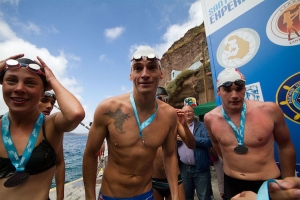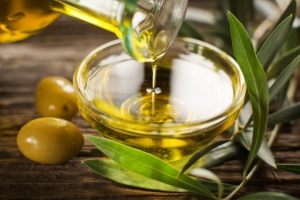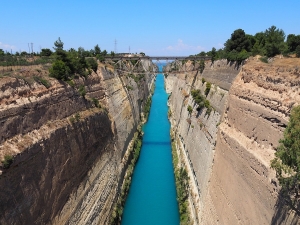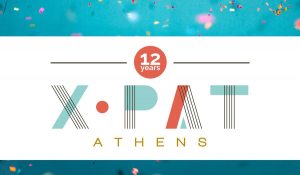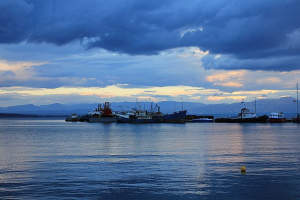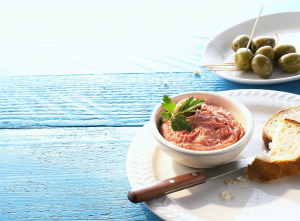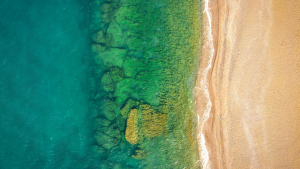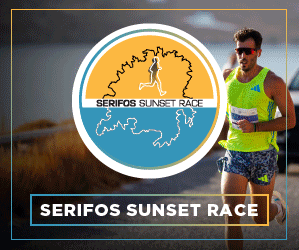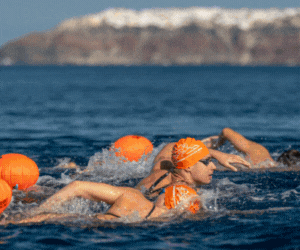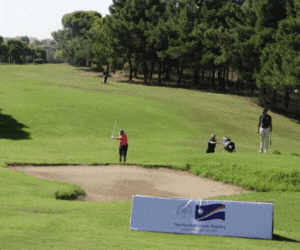XpatAthens
British Consular Services Survey - Greece
Press Event Held In Athens For Santorini Experience
The first announcement for the great organization of sports tourism “Santorini Experience” was held on Wednesday, May 18, 2016, with cinematic way at the Gold Class halls of Village Cinemas at The Mall Athens.
The event's program included two parallel screenings of the event’s video - documentary from the previous year (as was shown in more than 1.6 million households in Greece and abroad), to reporters and senior executives, as well as greetings from ambassadors and representatives of the organization.
During the event, this year’s activities of “Santorini Experience”, which include swimming and running, were presented for the first time, along with their ambassadors and coefficients. It was also announced that the organization has been placed under the auspices of the Hellenic Swimming Federation (KOE), which happens for the first time in open water swimming competition in a sports tourism event, highlighting the importance and solemnity of “Santorini Experience”, not only in Greece but also internationally. The element of extroversion and international promotion was credited also to one more “surprise” - cooperation that was yet to be revealed.
TV channel FOX Sports of FOX Networks Group, one of the biggest sports television networks in the world in subscriber base, distribution and promotion of sport content, undertakes this year as Official Broadcaster the broadcasting of the sports documentary “Santorini Experience”. The sports documentary will carry forward unique images of sports tourism in Santorini, to millions of homes in Europe, Asia and Africa through the vast television network of FOX Sports.
This year's event program includes open water swimming from the volcano to the old port of Fira. The swimming route has been designed by the Federal Technical coach of Swimming, with Olympic and World medals in open water swimming Nikos Gemelos, who will be the Technical Director of the event in swimming, while great names of our national team, such as Olympic and World Champion in open water swimming, Spyros Gianniotis and World Champion in open water swimming, Kelly Araouzou, along with a variety of leading open water swimming athletes like Antonis Fokaidis, Giorgos Arniakos and Dimitris Negris will take part in this year “Santorini Experience”.
Respectively, various running routes will be held at the magical path that connects Oia with Fira overlooking the Caldera. This year’ s routes have been selected by the former marathon runner, holder of national best performance on the classical route, running coach, manager of All About Running and technical director of the event in running, Nikos Polias. At the end of the press event, the Mayor of Santorini Anastasios Nikolaos-Zorzos said: “Last year we started Santorini Experience. A sports event that is becoming an institution for the island. “Santorini Experience” gives visitors the opportunity to combine wellness with the unique nature of the island, to live an “explosive” experience. Santorini Municipality and the Athletic Organization DAPPOS embraced and supported this event from the first time, thus trying to highlight another face of the island, the athletic side. We welcome you to the organization and wish that you live a truly unique life experience”.
On his part, the President of the Municipal Sports Cultural Environmental Organization of Santorini (D.A.P.P.O.S.) Mr. Eleftherios Tzouros said: “The journey that began last year in May 2015 continues. A journey where man and nature become one with respect and love. The idea of Santorini Experience is unique and unprecedented, since participants are invited to compete on the Caldera of Santorini (Land & Sea), with invisible spectator the Atlantis which many researchers speculate that sank in the sea of the caldera area. This “marriage” of nature - human and culture is a unique experience that we expect you to live”.
The President of the Hellenic Swimming Federation (KOE), Mr. Dimitris Diathesopoulos said: “After last year's successful hosting of the Open Water race of “Santorini Experience”, at beautiful Santorini, with the participation of leading distinguished members of the national team, but also with the presence of the President of the Swimming Federation, and after relevant conversations between the Mayor of Santorini and representative bodies of the organization, it was a mutual understanding that this great event will be implemented for the second consecutive year. This time it has been placed under the auspices of the Hellenic Swimming Federation. Something that signifies the importance and solemnity, not only in Greece but also internationally. Both I personally as president and KOE, we believe that this year we will have successfully organized a large organizational and participatory event and this will mark its establishment in a national and international level as one of the most important events in the Open Water area. I wish good luck to those who curated the event, expressing the assurance that KOE will be standing close to this effort, aiming to become one of the most important events in our field with a long perspective and massiveness in participations”.
Finally, the CEO of Active Media Group, Mr. Akis Tsolis said among other: “Municipality of Santorini, D.A.P.P.O.S., KOE, local companies of the island and a top global television network join together to promote swimming, running, in a unique Greek landscape like that of Santorini. The announcements of this day are quite significant and a milestone for sports tourism in Greece. The assistance of the Hellenic Swimming Federation and the broadcasting of the complete documentary (rather than just highlights), by FOX Networks Group, to more than 40 million households, indicatively to countries like China, India, South Korea, Turkey, Israel, South Africa and many others, and in continents such as Europe, Asia and Africa, make me really happy that we managed in such difficult times to unite all our forces for an innovative organization like Santorini Experience. We do not rest on what tourism achieves today, but we continue to build for tomorrow”.
“Santorini Experience” is a collaboration between the Municipality of Santorini, the Municipal Sports Cultural Environmental Organization of Santorini (D.A.P.P.O.S.) and Active Media Group.
Sponsor: Alafouzos Sport
Supporter: Village Cinemas
Official Broadcaster: FOX Sports
Hospitality Sponsors: Athina Luxury Suites, Central Fira Hotel, Sienna Residencies, Memories Hotel, Loizos Stylish Residencies
Under the auspices of the Hellenic Swimming Federation (K.O.E.).
For more information, please visit: Official Santorini Experience Website
The History Of Olive Oil In Ancient Greece
To read this article in full, please visit: Greek Boston
Athens Transportation Ticket System - What You Need To Know
Electronic Cards
-
The Ath.ena Ticket - Paper and rechargeable. Can be bought at every Athens transport ticket office or on the automatic ticket machines. Rechargeable at ticket offices and automatic ticket machines.
-
The personalized Ath.ena Card — Plastic and rechargeable w/ card holder’s photo and name. Can be bought from certain Athens transport ticket offices. You can recharge your personalized Ath.ena Card at Athens transport ticket offices, automatic ticket machines, as well as online through a phone or tablet with NFC technology.
-
The anonymous Ath.ena Card - Plastic and rechargeable. Can be bought from every Athens Transport ticket office. Rechargeable at ticket offices and automatic ticket machines.
After October 30th, passengers wishing to avoid the long lines may apply for a Personalized Ath.ena Card and receive it at home. To do so, the following documents are needed:
- Recent photo, the same type as those used for Greek passports or Greek police IDs
- A photocopy of an official document showing their AMKA health insurance number
- A photocopy of their current OASA-issued transport card along with the current paid coupon for October, or a previous month within 2017
- A printout of their online application and QR code issued through the Urban Transport Organisation (OASA) Site: www.athenacard.gr
On the unsealed envelope, you must include your name and address of preference (home, work) where the e-card should be sent. Please include the postal code. Envelope can be dropped off at any subway station during hours of service.
Please click HERE for more information on how to use the new electronic ticket/card system.
Sources: Tornos News, Athens Transport
- Getting to/from Athens International Airport
- City buses and trolleys
- Athens Metro
- Athens Tram
- Athens Suburban Railway
Amazing Facts About The Corinth Canal
July 9 - Happy Birthday XpatAthens
Pink Supermoon To Shed Its Light Over Greece
In a time of isolation and social distancing, this stunning natural phenomenon can be observed from our balconies, terraces, rooftops, and gardens. Don't miss the change to witness the awe-inspiring Pink Moon tonight!
This content has been sourced and prepared by Codico Lab.
Great Seaside Greek Destinations To Visit This Spring
Let's uncover together 4 destinations by the sea, perfect to visit during the spring months!
Nafpaktos
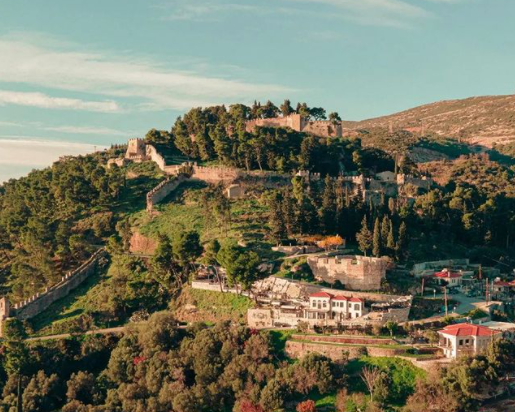
@mynafpaktos
Gytheio
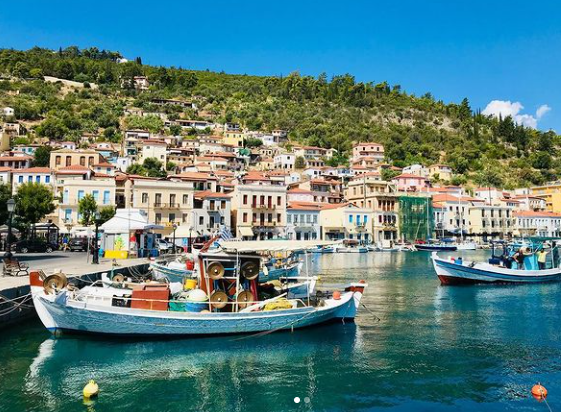
@sofiasachouli
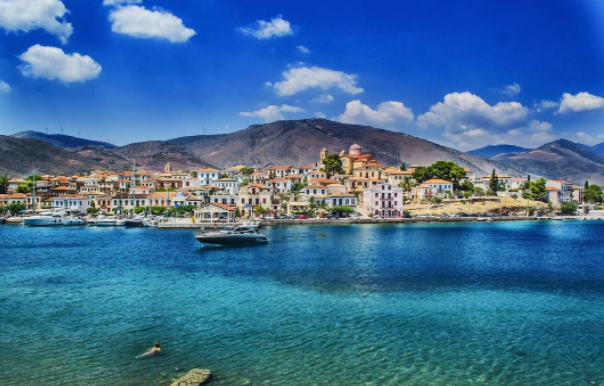
@greekmood2
Spetses
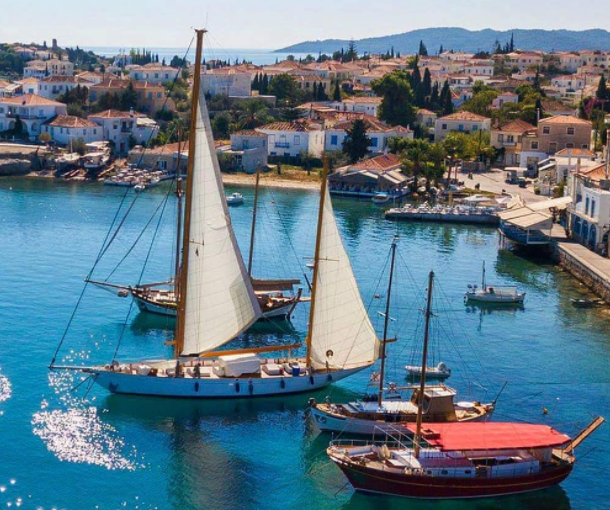
@spetsesisland
The affluent island of Spetses in the Saronic Gulf is without a doubt one of the best spring break destinations in Greece. Romantic and cosmopolitan, you will fall in love with its beautiful beaches and friendly residents. The Museum dedicated to Bouboulina, the fascinating Spetses Museum, and the islet of Spetsopoula are some of the island's main attractions, definitely worth visiting.
Taramosalata: A Lenten Dip For Clean Monday
- In a large bowl, add the bread and water. Let it soak thoroughly.
- Line a separate bowl with a kitchen towel. Add the bread and water. Wrap the bread in the towel and wring to remove as much of the water as possible. Transfer to a bowl and set aside.
- In a food processor, add the onion, garlic, and 200 g of water. Beat until completely pulverized.
- Transfer to a bowl lined with a kitchen towel and wring to remove as much of the liquid as possible.
- Place back in the food processor and add the fish roe, soaked bread, pepper, lemon juice, and lemon zest (2-3 lemons, depending on their acidity and your preferences). Beat for 3-4 minutes until the mixture is completely combined and fluffy.
- Add the olive oil and vegetable oil in a slow, steady stream while beating. If your food processor doesn’t have an opening, add the oils in 50-gram batches for each type of oil.
- Taste and adjust the lemon to your liking.
- Serve with olive oil, pepper, thyme, and olives.
How To Experience Luxury In Greece Beyond The Crowds
Greece is known worldwide as a land of such beauty and magic that it inspired myths that have persisted for thousands of years. The mainland, the islands, the ocean: a collection of natural beauty unlike any other on earth.
It's not just natural beauty here, though; man-made marvels that have lasted through the ages adorn the land and bring a level of cultural richness and historical significance that few lands can still lay claim to. Greece is one of the most favored tourist hotspots on the planet, but what options are there for luxury tourists who want to stay far from the maddening crowds and explore Greece's physical and cultural landscapes in a respectful, appreciative, unusual way? Let's take a look.
Not The Average Greek Vacation
While there are some stops on the tourist track that are unmissable (the museums, the ruins, the gorgeous white and blue homes clinging to the side of the hills that rise from the ocean) there are other experiences off the beaten track and ones that cater to discerning travelers who are looking for something a little bit deeper with a little bit more of a luxurious edge. Charter a private plane, dial up your concierge service, pack your swimsuits, and let's experience Greece in an entirely new way.
The Islands Off the Beaten Path
These islands are the perfect choice for the visitor who seeks a quieter, more exclusive Greek destination.
-
Kythnos, Cyclades Islands
Luxury Stays: The Piperi Suites or Olos Luxury Villas.
Favored by Athenians in the know as a weekend escape, Kythnos is where you can retreat to get an authentic experience of the Greek people, their culture, and country. It's practically unknown to international tourists, so consider this a trade secret shared between friends. The island's capital, Hora, is car-free, so expect to do some walking, but pleasurable walking unimpeded by aggressive motorists. Tread the mule paths, dip in the hot springs that wind around, and catch sight of the castles and half-tumbledown ruins dotting the headlands. Get a taste of the island with magnificent, locally produced honey, classically heavy Greek wines, and robust cheeses while you're there.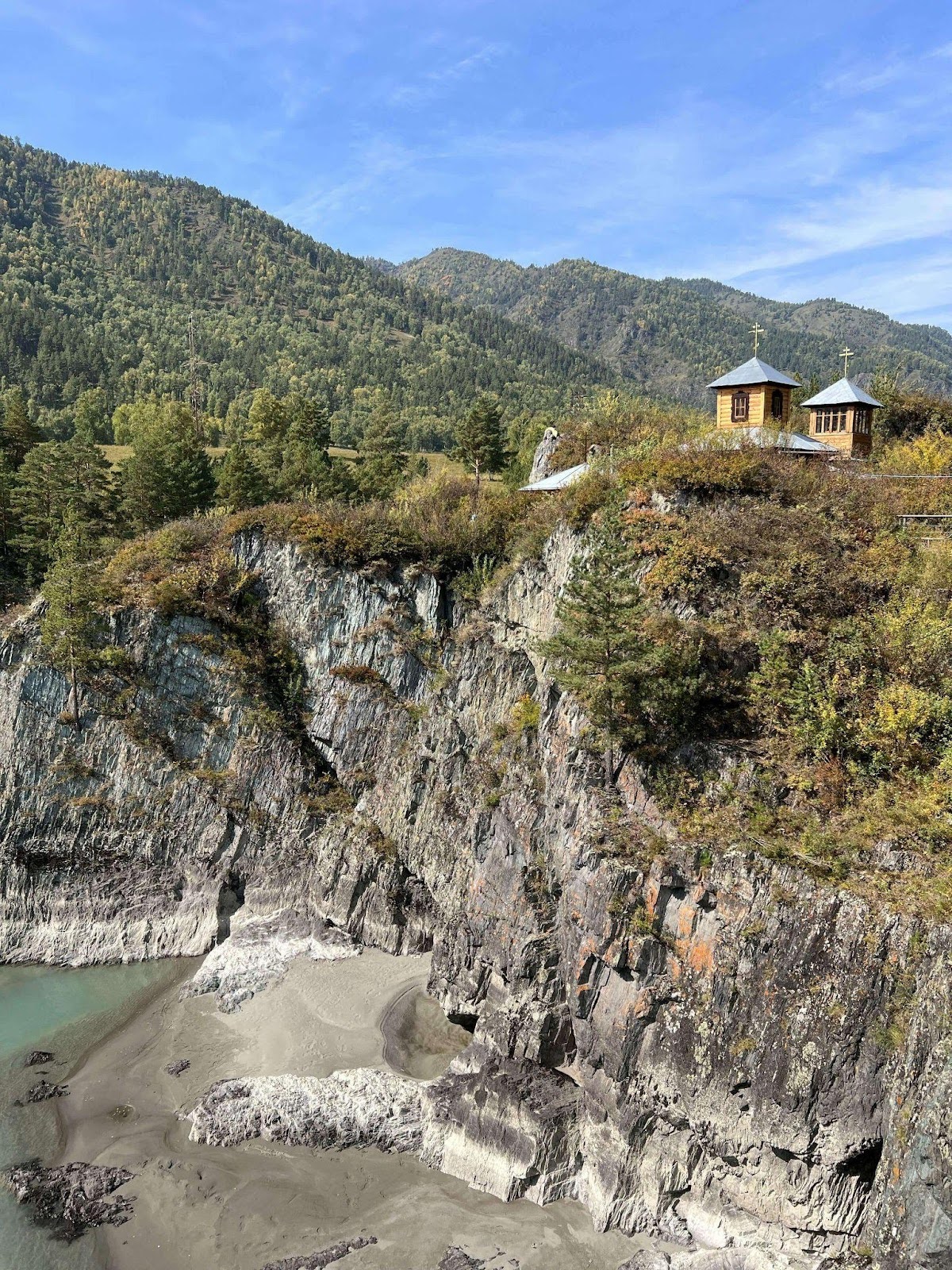
Patmos, Dodecanese Islands
Luxury Stays: Patmos Aktis, a Luxury or Patmos Eye Boutique Hotel and Villas
While this isn't a typical tourist destination, it is the end of a pilgrimage route for those who seek to commune with St John at his Monastery or pay their respects at the Cave of the Apocalypse, where legend has it the book of Revelation was penned. If these pursuits don't speak to you, fear not: the collection of pebbly and sandy beaches is the perfect place to relax after taking yourself on a nature stroll through the fields of orchids that burst forth from the soil when spring arrives.
Syros, Cyclades Islands
Luxury stays: Aristide Hotel, an SLH Hotel, or Ploes
Though the “heydays” of the island in the sense of it being one of the wealthiest in all of Greece are behind it, that faded opulence has a special, nostalgic quality that draws people in. Take your time and explore the marvellously unique neoclassical streets of Ermoupolis and pause to embrace history at the acropolis of Kastri. Pack your hiking boots if you’re visiting this island because some of the most beautiful views are available as you weave across the jagged, rocky cape and find the treasure under the rainbow: a little beach at the end of almost every trail.
Karpathos, Dodecanese Islands
Luxury stays: Orelia Luxury Villas (Amoopi) or Althea Boutique Hotel (adults only).
While beaches aren’t all that Greece has to offer, there is something to be said for setting aside a day to take it easy and bask on a rock or in the sand of a stunning Greek beach. Karpathos has much to offer, but a far quieter and more exclusive version than those on the more well-travelled islands like Mykonos. The villages on this island add another special layer of character to the experience, especially Olympos, which is known as the Balcony of the Aegean thanks to the exquisite views of the never-ending ocean. Here you’ll find groves of mint and citrus winding their way drunkenly down the mountain and the occasional outdoor oven the locals still use to make heavenly breads and pastas.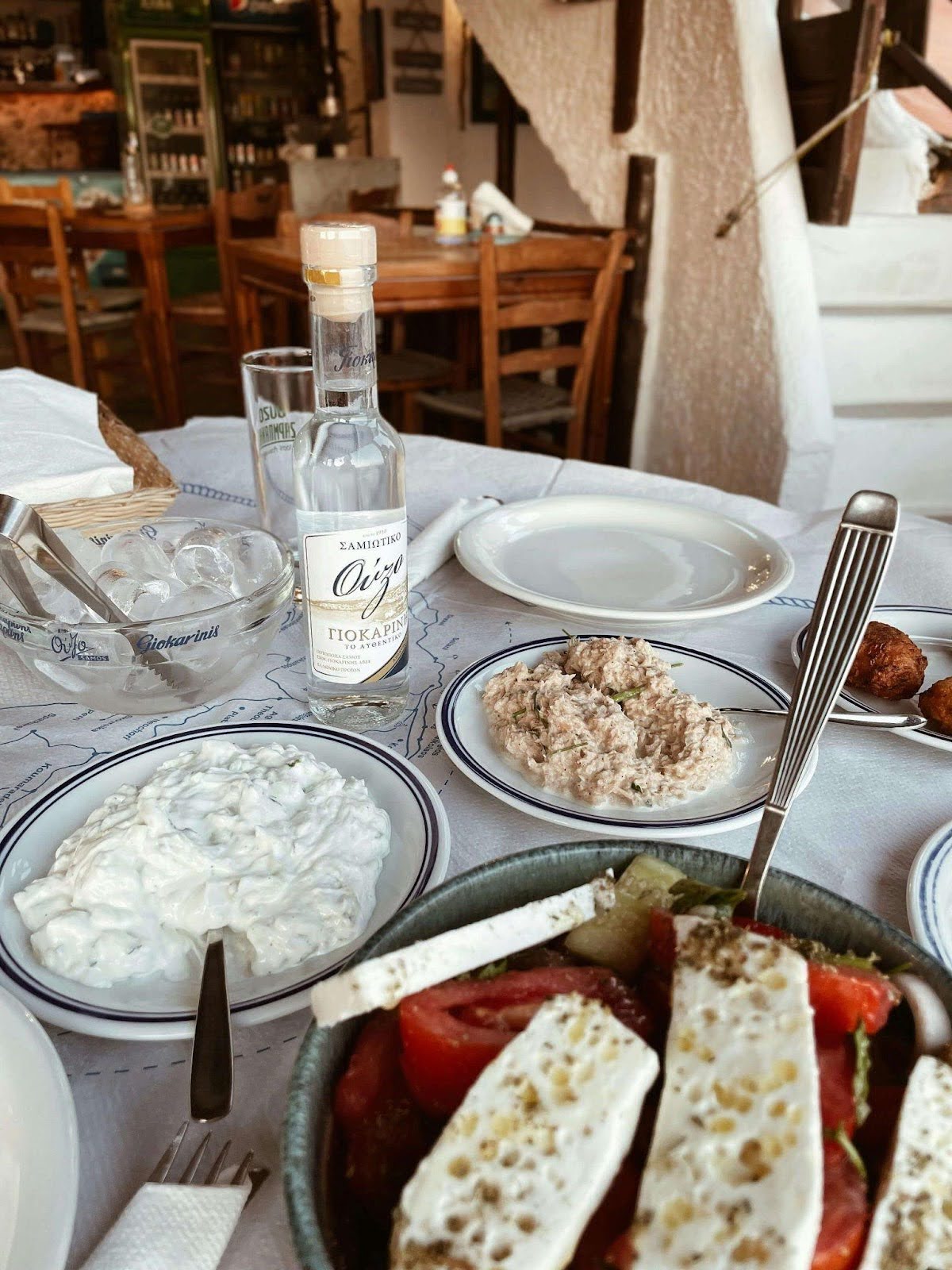
Unusual, Luxury Greek Experiences
Whether on the islands or the mainland, Greece is full of exclusive luxury experiences and adventures if you know where to look
The Zakynthos Shipwreck Adventure
Navagio Beach, also called Smuggler's Cove or Shipwreck Beach, is one of Greece's most iconic sights. In this small bay, smugglers once plied their illegal trade, and in 1980, the MV Panagiotis ran around in the clear blue bay, creating an adventure site with exclusive, guided dive tours. That said, the beach is frequently closed to visitors due to safety concerns, as the surrounding cliffs are unstable and prone to rockfalls. Local authorities regularly assess the area and may restrict access without notice, especially during or after heavy rains or seismic activity. Always check ahead and follow official guidance to avoid disappointment.
Paros’ Kitesurfing and Water Sports Scene
If you’re a thrill seeker or adrenaline junkie, this one's for you. The consistent winds that scour the coast of Paros make for excellent kite and windsurfing conditions. Access to scuba diving provides a calm escape below the waves and entrance into an underwater paradise that simply can't be beaten.
A Foodie Tour of Athens’ Michelin-Starred Restaurants
Athens is hardly off the beaten path, but it does bear visiting for many reasons, including all the cultural and gastronomic attractions. From souvlaki and gyros on every corner to a selection of Michelin-starred restaurants, Athenian cuisine is overflowing with the freshest ingredients crafted into classic and contemporary Greek dishes. There's Delta, with two Michelin stars, Hytra with one star, and Varoulko Seaside (also one star) for a range of avant-garde, classic with a flair, and traditional Greek dishes that will haunt your dreams forever.
Far From The Maddening Crowds
Your luxurious Greek vacation will be one so enriching, so enjoyable, and so exciting that you’ll want to repeat it year after year. The only thing left to do is decide where you’ll go first and what you’ll do when you get there.



